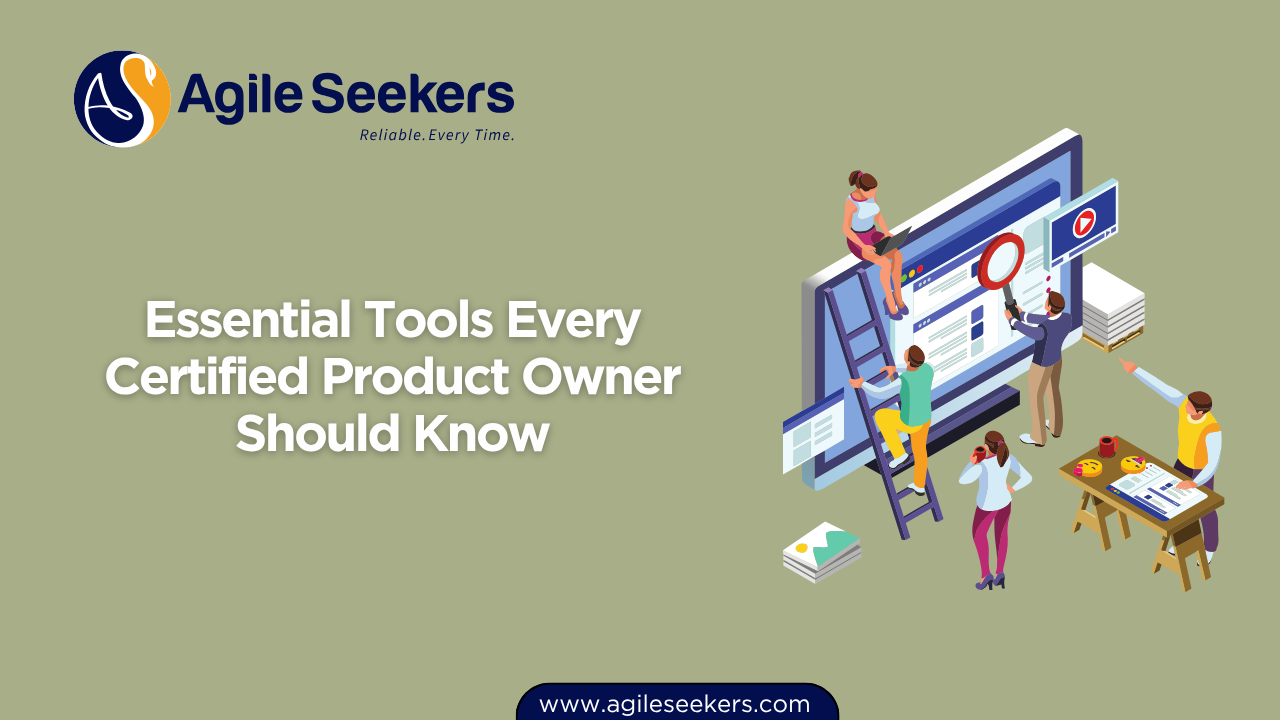Essential Tools Every Certified Product Owner Should Know

Product Owners carry the responsibility of translating business goals into actionable development work. To do this effectively, they need more than just theoretical knowledge — they need the right tools. Whether you’ve completed your Certified Product Owner Training or are preparing to step into the role, this guide walks through the essential tools that help Product Owners manage backlogs, align teams, and deliver value continuously.
1. Product Backlog Management Tools
Jira
Jira is widely used in Agile environments. It offers user story creation, sprint planning boards, burndown charts, and detailed tracking options. As a Certified Scrum Product Owner, you can use Jira to collaborate with Scrum Masters and Developers while maintaining clear prioritization and refinement of the product backlog.
Azure DevOps
Azure DevOps combines backlog management with CI/CD pipelines. It’s suitable for teams already embedded in the Microsoft ecosystem. Features such as user story mapping, sprint tracking, and cross-team coordination make it a strong choice for complex products.
Trello (for Lean Product Management)
For simpler products or startups, Trello provides visual board-based backlog tracking. While not feature-rich like Jira, it’s user-friendly and useful for quick MVP roadmaps and prioritization discussions with stakeholders.
2. Roadmapping and Strategy Tools
Aha!
Aha! allows Product Owners to align product goals with initiatives, epics, and features. It supports customer feedback loops and integrates with Jira, making it ideal for mapping strategic objectives to execution-level work.
Productboard
Productboard helps Product Owners gather feedback, prioritize features, and create clear product roadmaps. Its customer-centric design is ideal for validating product decisions with evidence, especially useful after completing your CSPO Certification.
3. Collaboration and Communication Tools
Miro
Miro supports online whiteboarding, enabling remote PI planning, user story mapping, and stakeholder alignment. For Product Owners, it’s a go-to platform for discovery workshops, MVP scoping, and roadmap visualization.
Slack / Microsoft Teams
While these are basic communication tools, advanced Product Owners use them to coordinate quickly with stakeholders and technical teams. Integrations with Jira, Trello, and Productboard streamline notifications and task updates directly into communication channels.
4. Analytics and Feedback Collection
Google Analytics
Google Analytics is essential for understanding user behavior. Certified Product Owners use it to validate features post-launch and support backlog prioritization with real data.
Hotjar / FullStory
These tools offer heatmaps, session recordings, and feedback polls. They provide insights into how users interact with the product, helping Product Owners refine features and justify roadmap changes with behavioral data.
Typeform / SurveyMonkey
Surveys offer a structured way to gather user insights. After your Certified Product Owner certification, using these tools helps keep customer feedback as a core input in backlog refinement.
5. Estimation and Planning Tools
Planning Poker
Tools like Scrum Poker Online and Mountain Goat Software’s Planning Poker help teams estimate story points collaboratively. A Certified Product Owner ensures that backlog items are ready for planning and that estimations reflect real effort.
StoriesOnBoard
This is a user story mapping tool that supports collaborative refinement and decomposition of features into manageable slices. It ensures the team understands the “why” behind each feature and helps visualize user journeys.
6. Prioritization Framework Tools
AIRfocus
AIRfocus provides scoring models and visualization for prioritizing features. Product Owners use it to communicate the rationale behind backlog order, helping stakeholders see trade-offs clearly.
Kano Model Toolkits
Using tools that support Kano modeling helps Product Owners categorize features as basic, performance, or delighters. This is helpful when deciding between technical debt, customer requests, and business priorities.
7. Design and Prototyping Tools
Figma / Adobe XD
While these are primarily for designers, Certified Product Owners benefit from using Figma or Adobe XD to review wireframes and give early feedback. These tools also help validate UI/UX assumptions before development starts.
MarvelApp / InVision
Clickable prototypes built in MarvelApp or InVision support early-stage user testing. Product Owners can involve stakeholders early and ensure alignment before writing a single line of code.
8. Workflow and Automation Tools
Zapier / Make (Integromat)
Automation tools reduce manual effort. Product Owners can use Zapier or Make to link feedback forms with backlog tools or auto-update stakeholders when status changes occur in Jira.
Notion
Notion is an all-in-one workspace that some Product Owners use for roadmaps, user research, retrospective notes, and product documentation. Its flexibility makes it ideal for early-stage teams or solo PO/PMs.
9. Product Metrics and OKRs
Amplitude
Amplitude tracks product usage across features, funnels, and retention metrics. For Product Owners, this bridges the gap between delivery and measurable value.
Gtmhub / Perdoo
OKRs align product outcomes with business goals. Tools like Gtmhub or Perdoo ensure that your features connect directly to measurable objectives, which is crucial for driving stakeholder alignment after your CSPO training.
10. Documentation and Knowledge Repositories
Confluence
Confluence integrates with Jira and is a standard for documenting requirements, sprint goals, and decision logs. Product Owners often use it to maintain transparency and support onboarding of new team members.
Google Workspace / Microsoft 365
While simple, tools like Google Docs and Sheets are still highly effective for quick data capture, decision tracking, and feature scoring. Teams often rely on shared documents to centralize inputs across time zones.
Conclusion
Tools don’t replace judgment, but they empower Product Owners to make better decisions, foster collaboration, and align execution with strategy. Whether you are new to the role or refining your skills after earning your CSPO Certification, investing time in the right tools will significantly improve your ability to deliver value.
At AgileSeekers, our Certified Product Owner certification program not only prepares you for real-world responsibilities but also introduces you to industry-standard tools used by top-performing Agile teams. Explore our CSPO training options and take your first step toward becoming a tool-savvy, value-driven Product Owner.
Also Read - Common Mistakes to Avoid as a New Scrum Product Owner
Also see - How CSPO Certification Can Help You Transition into Product Management




















